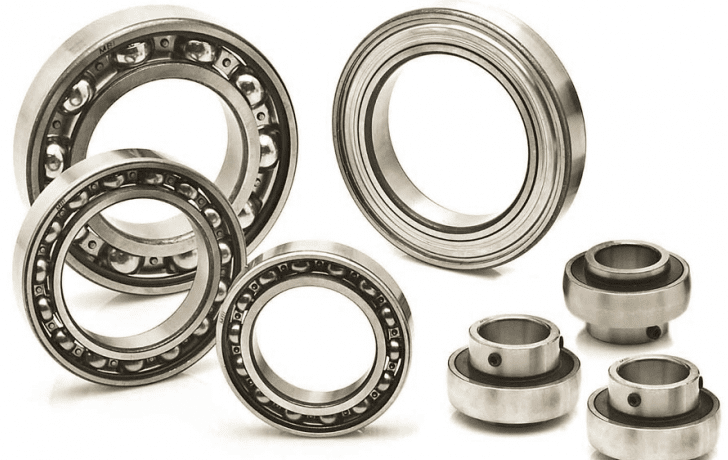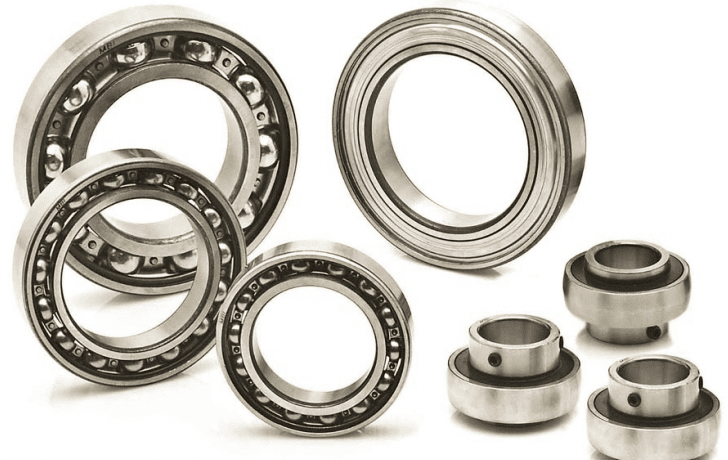
Everyday experience in applications engineering has shown that choosing the correct bearing type can be successfully achieved by customers based on the documentation and tools provided by the bearing manufacturer and using comparable guidelines as a reference.
This selection process is normally dominated by two complementary factors: first, the degree of bearing life required in the application as a result of the relationship between the dynamic load rating of the bearing and the magnitude and direction(s) of the forces acting and the rotation speed. Secondly, the constructive size of the bearing in relation to the space available in the application.
Furthermore, there are many other critical bearing characteristics that are not always taken into consideration with the necessary diligence and that can subsequently cause problems and doubts in the actual application of the bearing. From practical experience they are, among others: type of cage; lubrication; Standard seal variants pre-installed in deep groove ball bearings and others.
The following should be considered an overview and an aid when considering these characteristics in a project and for the purpose of answering frequently asked questions about these topics.
The nominal game
Nominal bearing clearance is the distance between the end positions at which the rings of a bearing can be moved against each other. For most radial bearings, this radial distance of motion, better known as radial clearance, is given in publications, while double-row or paired angular contact ball bearings and tapered roller bearings are listed with an axial clearance. The game ranges are combined into game classes (radials) that are largely standardized accordingly. according to DIN 620 and easily identifiable by the suffixes C3, C4 etc.
Bearing clearance has a significant influence on the operation and performance of a bearing and it must be considered that, with some exceptions in special applications, a bearing always requires a certain clearance for correct operation, the so-called “operational clearance”. .
This operating clearance results primarily from the chosen clearance class of the bearing in combination with the shaft and housing settings required for a specific application, the shaft and housing material respectively. its coefficient of thermal expansion and the temperature difference between the shaft and housing during operation, potentially including additional heat that is transferred to the application through the shaft. Typically, these factors cause a “constriction” of the bearing, thereby considerably reducing the rated clearance, and in a worst-case scenario, an inadvertent preload may result.
To recognize the risk of inadvertent preload which typically causes additional friction and heat losses, therefore posing a very real risk of premature bearing failure, it is highly recommended that an operating clearance assessment be added to any bearing selection process. bearing. It is necessary to choose the bearing clearance class that provides sufficient clearance during operations.
The corresponding formulas are published in the bearing manufacturers' technical documentation and the application engineering department is able to support the customer with detailed analyzes and recommendations.
Cage type
Each bearing is supplied by the manufacturer equipped with a type of standard cage which, due to the sum of its characteristics – mainly the material of the cage and guide – is suitable for use in “standard” applications.
Further verification of the cage type is typically recommended in conjunction with the manufacturer of the bearing to be used in a specific application when the following operating conditions occur, including:
- Operating temperature – for example, polyamide cages (PA 6.6.) Reach their use limit at operating temperatures of 120°C. Above this temperature, metal cages or special plastic cages such as PEAK must be used.
- Fast acceleration and/or low loads: In these cases, depending on the type and size of the bearing, consideration should be given to using lightweight cages, for example polyamide or pressed steel cages or ring-guided cages, to avoid the weight of the cage slowing or blocking the movement of rolling elements, subsequently causing burr damage due to slipping.
The same principle also applies to applications where bearings are subject to shock loads, vibrations and high centrifugal forces, for example in eccentric shafts.
- Lubrication situation – in general, grease-lubricated applications favor the use of rolling element-guided cages, as the formation of a sufficiently stable lubricating film in the space between a ring-guided cage and the ring itself often cannot be achieved reliably.
Oil-lubricated bearings are not normally subject to such restrictions. However, they require additional design efforts at the bearing periphery. An additional consideration should be the compatibility of high-tech, highly synthetic lubricating oils with plastics and rubber used in cages and external seals.
Lubrication
The selection of the correct lubricant responds to the assessment of the suitability and durability of a lubricant, for example in pre-lubricated and sealed deep groove ball bearings, it represents, in addition to the topic of bearing clearance, one of the most underestimated topics in the use of bearings. On the one hand, the best possible lubrication effect must be considered to minimize friction and metal contact under realistic operating conditions. On the other hand, any lubricant is subject to aging during operation, depending on actual operating conditions. Often, the performance of the lubricant is degraded to the point that it reaches the end of its useful life long before the bearing itself. The actual operating temperature again plays a significant role in this context.
Standard seal variants pre-installed in deep groove ball bearings and others
There are several misconceptions regarding the use and performance of pre-installed bearing seals offered by the manufacturer, which in turn can affect the actual performance and longevity of the bearings.
First, contact with bearing seals should not be considered watertight. This arises from the very limited space in which such seals are integrated and the necessary design compromise between seal efficiency and the minimization of friction and associated friction loss. Therefore, depending on the actual application, it is recommended to carefully evaluate the pre-installed bearing seals in terms of the required sealing efficiency and balance them with acceptable friction losses. If the available solutions are insufficient, the use of special bearings can be considered, for example with integrated radial seals, or additional external sealing measures of the bearing position must be provided.
A second problem that frequently arises in the context of pre-lubricated and sealed bearings is the formation of a “grease collar” in the gap or sealing lip. This grease collar results from the expulsion of a small amount of grease during the internal grease distribution process when a bearing begins to operate. Although it may affect the visual perception of a bearing, this collar is not actually a defect but rather an added protection for the bearing as it captures contamination well outside the bearing and away from the actual sealing gap or sealing lip, thus helping to further delay an intrusion of contamination into the bearing itself.

























































